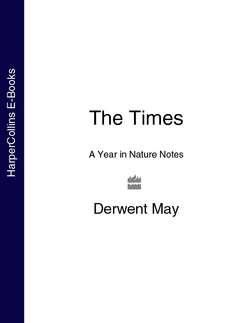Читать книгу The Times A Year in Nature Notes - Derwent May - Страница 14
9th January
ОглавлениеSKYLARKS FEED ALMOST exclusively on the ground – they take everything from seeds to slugs – so when there is a covering of snow they roam the countryside looking for sustenance. The winter visitors may wander far afield, but the British residents soon return to their own fields and moors. Before long they will be singing again, high in the sky.
Another lark that can be seen here in winter, mainly on the east coast, is the shore lark. These birds are easily overlooked because they crouch on the shore and then shuffle along with their heads down, quite unlike the brisk skylarks. They can be recognised by their yellowish faces, and, in the case of the male, by the two black stripes on the top of his head that end at the back in tiny horns (they are sometimes called horned larks). These features will become sharper as spring nears, and they prepare to return to their homes in the Arctic tundra.
In the woods, the first shoots of dog’s mercury are coming through. The jagged-edged leaves will soon be unfolding and in a fortnight the first green flowers will be out. In some places they will carpet the whole woodland floor for a while.
